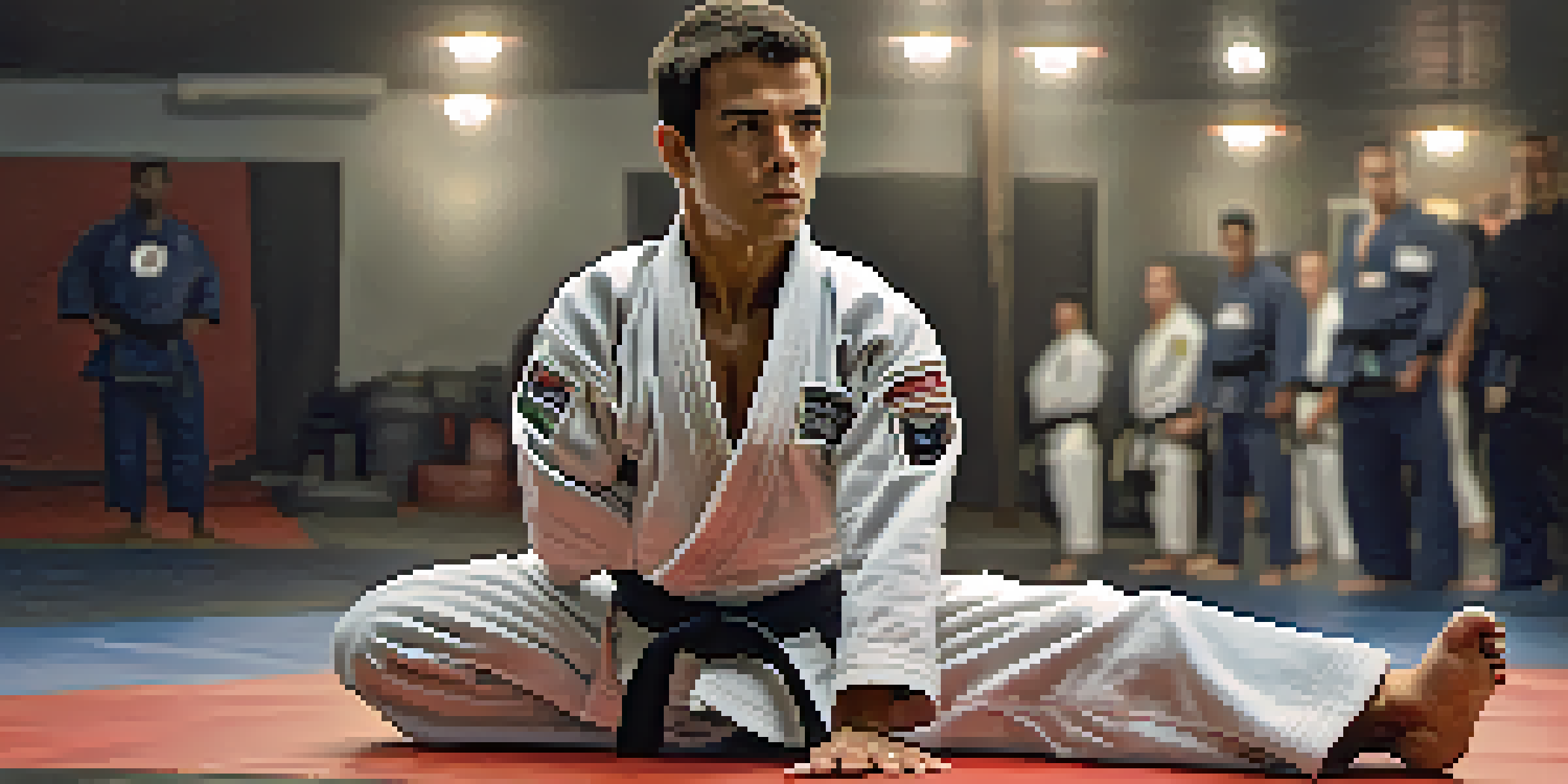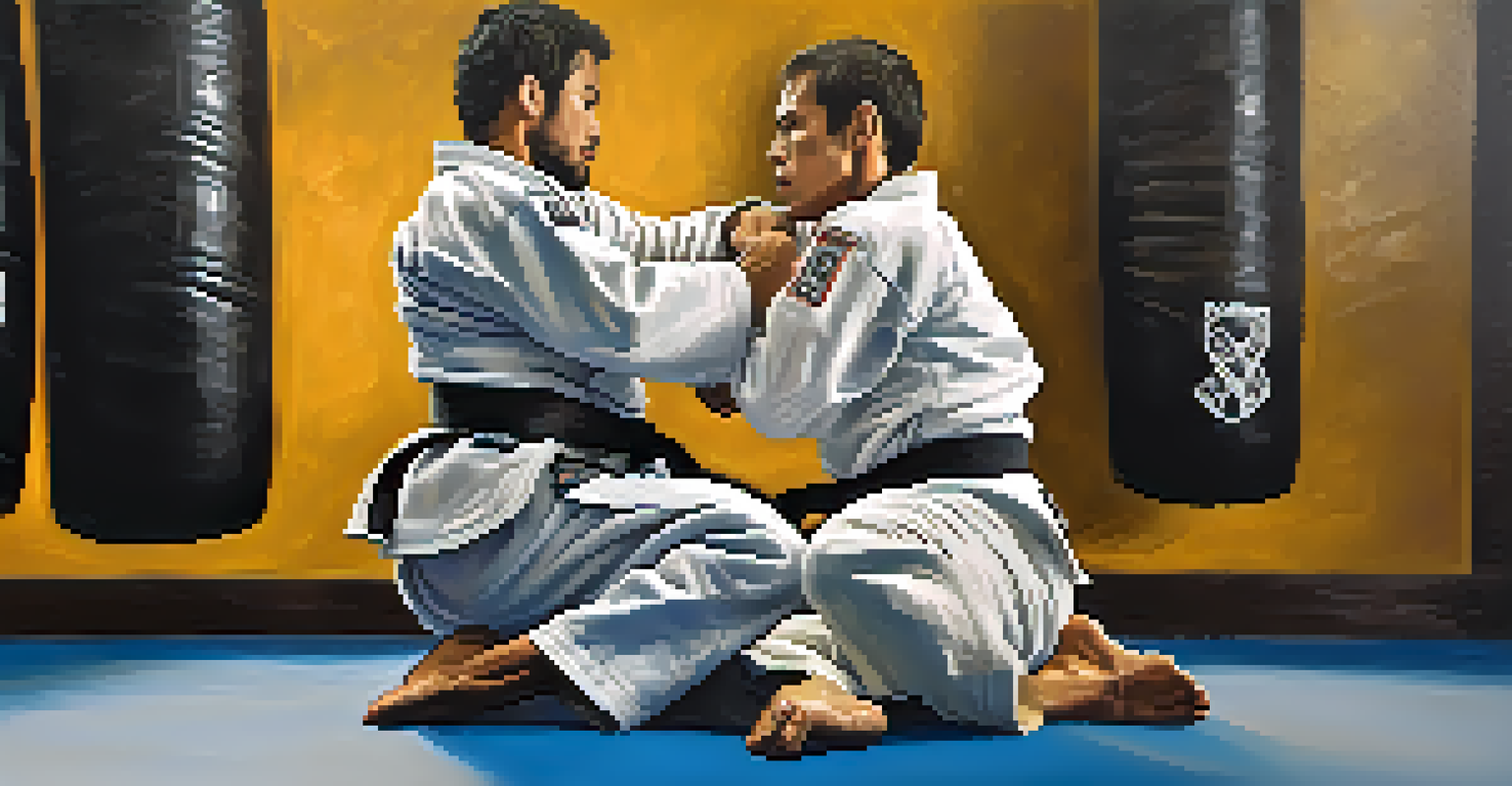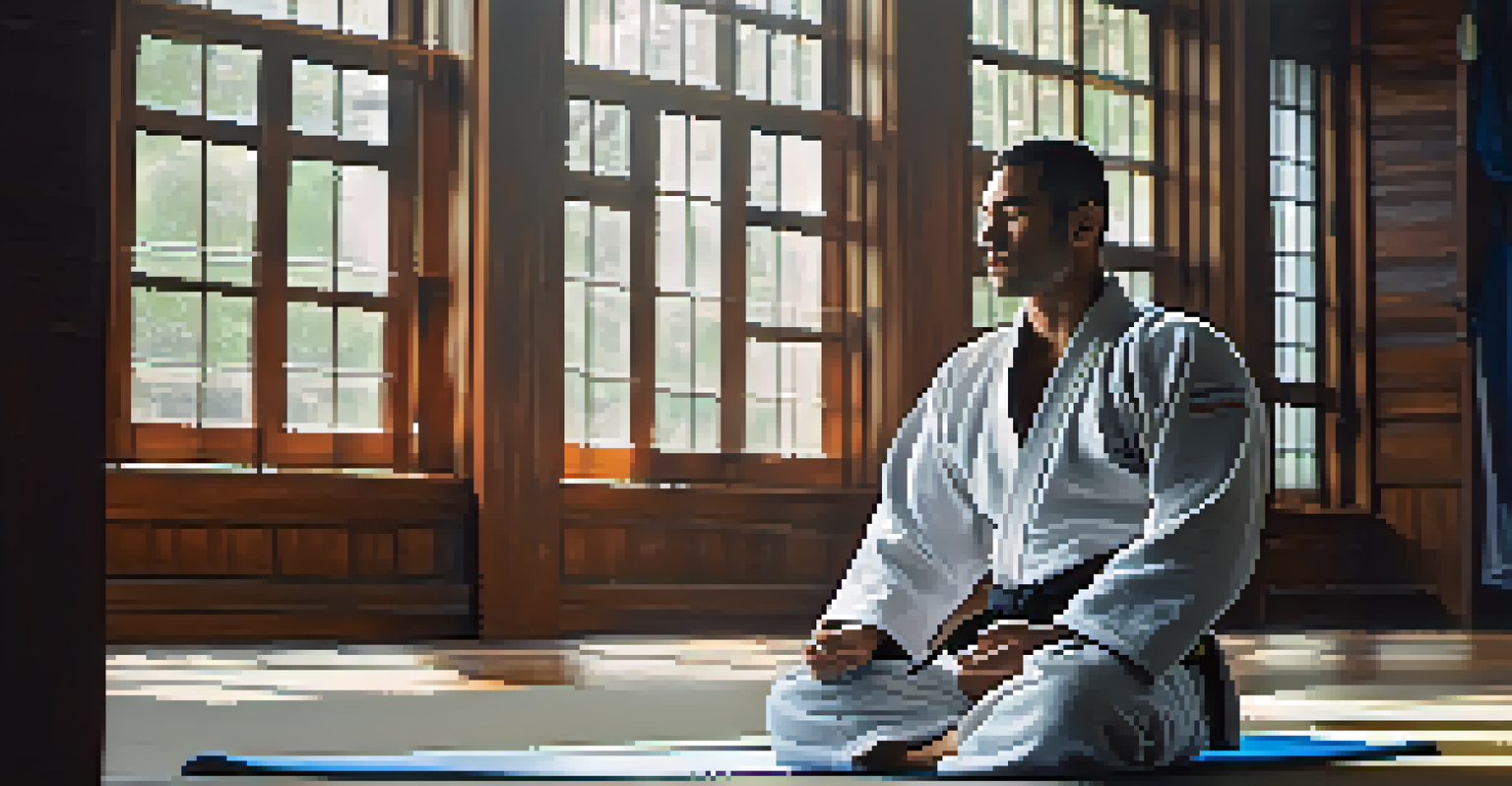Self Defense Techniques Unique to Brazilian Jiu-Jitsu

Understanding the Basics of Brazilian Jiu-Jitsu
Brazilian Jiu-Jitsu (BJJ) is a martial art that emphasizes ground fighting and submission techniques. Unlike some striking arts, BJJ focuses on using leverage and technique over brute strength, making it accessible for individuals of all sizes. This aspect is particularly valuable in self-defense scenarios, where being able to neutralize a larger opponent can be crucial.
It's not about being the best. It's about being better than you were yesterday.
In BJJ, practitioners learn to control an opponent through various positions, allowing them to defend effectively. This technique-based approach encourages problem-solving during a confrontation, as practitioners can adapt their strategies based on the situation. Understanding these fundamentals sets the stage for exploring specific self-defense techniques that BJJ offers.
BJJ's core philosophy is that a smaller, weaker person can defend against a larger attacker by using proper technique and timing. This principle is the foundation of many self-defense techniques that are not only effective but also practical in real-life situations.
The Importance of Positioning in Self Defense
Positioning is vital in Brazilian Jiu-Jitsu, and it plays a significant role in self-defense. By achieving a dominant position over an opponent, such as mount or back control, a defender can effectively neutralize threats. These positions allow practitioners to control the situation without relying on striking, which can escalate violence.

For example, if an attacker tries to grab or tackle you, transitioning to a dominant position can give you the upper hand. Once in a favorable position, you can apply various techniques to subdue the attacker or escape safely. This focus on positioning transforms the dynamics of self-defense, emphasizing control over aggression.
BJJ Empowers Through Technique
Brazilian Jiu-Jitsu allows individuals to defend themselves effectively by using leverage and technique rather than brute strength.
Furthermore, understanding positioning helps practitioners anticipate their opponent's moves. This awareness enables defenders to react more effectively, creating opportunities to counterattack or escape without unnecessary confrontation.
Key BJJ Techniques for Self Defense
Several techniques within Brazilian Jiu-Jitsu are particularly effective for self-defense. One example is the 'guard' position, where a practitioner can effectively control an opponent from their back. This position allows for various sweeps and submissions, making it a versatile tool in a self-defense scenario.
In martial arts, the journey is the reward.
Another critical technique is the 'kimura' lock, which can immobilize an attacker's arm and create an opportunity to escape. This move is not only practical but also demonstrates how BJJ emphasizes control rather than causing harm. The goal is to neutralize the threat while minimizing the risk of injury to both parties.
These techniques showcase BJJ's adaptability. Whether you find yourself on the ground or in a standing position, there are effective methods within BJJ to protect yourself, illustrating the art's comprehensive approach to self-defense.
Escaping Choke Holds with BJJ Techniques
Choke holds are common in self-defense situations, and Brazilian Jiu-Jitsu offers effective escape techniques. One popular method is the 'two-on-one' escape, where a practitioner uses both hands to control the attacker's arm, creating space to break free from the choke. This technique emphasizes the importance of staying calm and using leverage to escape.
Another effective escape involves tucking your chin and turning your body towards the attacker. By doing this, you can relieve pressure on your throat and create an angle to escape. This technique highlights the importance of awareness and body movement in self-defense, allowing individuals to respond effectively to choking threats.
Positioning is Key in Self Defense
Achieving dominant positions in BJJ enables practitioners to control confrontations without escalating violence.
Practicing these escape techniques not only builds confidence but also prepares individuals for real-life encounters. BJJ emphasizes adaptability, enabling practitioners to handle various situations, including the stress of being choked.
Utilizing Joint Locks for Self Defense
Joint locks are another cornerstone of Brazilian Jiu-Jitsu that can be effective in self-defense. Techniques like the 'armbar' and 'wrist lock' allow a practitioner to immobilize an opponent, providing a clear advantage in a confrontation. By targeting an attacker's joints, a defender can compel compliance without causing excessive harm.
These locks work on the principle of leverage, allowing individuals of all sizes to control their opponents. For instance, an armbar can be executed from various positions, including when on the ground or in a standing fight. This versatility makes joint locks a valuable addition to any self-defense repertoire.
Moreover, understanding how to apply and escape joint locks enhances a practitioner’s overall skill set. It fosters a deeper appreciation for BJJ's techniques, emphasizing the balance between control and restraint in self-defense.
Using BJJ to Defend Against Multiple Attackers
While Brazilian Jiu-Jitsu is primarily focused on one-on-one encounters, its principles can also apply when facing multiple attackers. The key is to remain calm and focused, using positioning and movement to avoid being overwhelmed. BJJ teaches practitioners to create space and escape, which is crucial when dealing with multiple threats.
One effective strategy is to control the nearest attacker while keeping an eye on others. By neutralizing the most immediate threat, you can create an opportunity to escape or reposition yourself to face the remaining attackers. This approach underscores the importance of situational awareness in self-defense scenarios.
Mental Preparedness is Essential
BJJ training fosters mental agility and calmness, crucial for responding effectively to real-life self-defense situations.
Additionally, practicing drills that simulate multiple attackers can help build confidence and improve reflexes. BJJ training emphasizes adaptability, allowing practitioners to think on their feet and respond effectively, even in challenging situations.
Mental Preparedness and BJJ for Self Defense
Mental preparedness is a crucial aspect of self-defense, and Brazilian Jiu-Jitsu training fosters this mindset. Practitioners learn to stay calm under pressure, which can make all the difference during a confrontation. The consistent practice of techniques in a controlled environment helps build confidence, allowing individuals to respond more effectively in real-life situations.
Moreover, BJJ encourages a problem-solving approach to conflicts. Practitioners are trained to assess their surroundings and make quick decisions based on the situation. This mental agility is invaluable in self-defense, where every second counts.

Ultimately, BJJ not only equips individuals with physical techniques but also cultivates a resilient mindset. This combination of skills prepares practitioners to face potential threats with confidence and clarity.